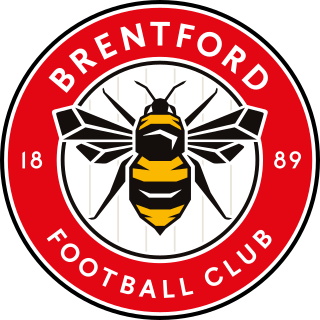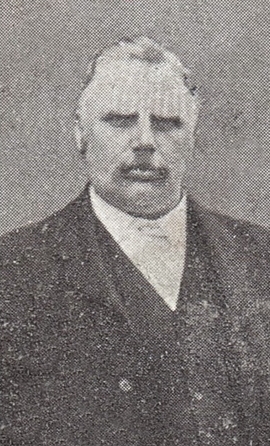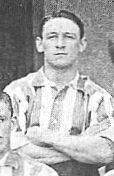
Brentford Football Club is a professional association football club based in Brentford, West London, England. The team competes in the Premier League, the top tier of English football. Nicknamed "The Bees", the club was founded in 1889 and played home matches at Griffin Park from 1904 before moving to the Brentford Community Stadium in 2020.

Barnet Football Club is a professional association football club based in London Borough of Harrow, North West London. The team competes in the National League, the fifth level of the English football league system. The club was founded in Chipping Barnet in 1888. From 1907 until 2013 they played their home matches at Underhill Stadium, then moved to the new Hive Stadium, which is named based on the club's nickname of "The Bees".

Richard Molyneux was an English football manager. He managed in nearly 400 games in the Football League with Everton from 1889 to 1901 and later managed Brentford.

John Frederick Halliday was an English professional footballer and manager who played as a full back in the Football League for Bolton Wanderers and Bradford City. He went on to manage Bradford Park Avenue and Brentford. He was posthumously inducted into the Brentford Hall of Fame in 2015.
During the 1926–27 English football season, Brentford competed in the Football League Third Division South. In Harry Curtis' first season as manager, the club finished 11th and advanced to the fifth round of the FA Cup for the first time.
During the 1911–12 English football season, Brentford competed in the Southern League First Division. A forgettable season saw the club finish in mid-table and advance to the first round proper of the FA Cup.
During the 1948–49 English football season, Brentford competed in the Football League Second Division. It was Harry Curtis' final season as manager and he was replaced by Jackie Gibbons in February 1949. Brentford ended the season in 18th-place, just one point away from a second relegation in three seasons, though the Bees advanced to the sixth round of the FA Cup for the third time in the club's history.

Brentford Football Club is an English professional football club based in Brentford, Hounslow, London. The club was founded in October 1889, as the local sportsmen's latest attempt to form a permanent football or rugby club in the town. By 1896, Brentford had joined the London League, progressing to the Southern League in 1898 and entering the Football League in 1920.
During the 1953–54 English football season, Brentford competed in the Football League Second Division. With Brentford in the relegation places, player-manager Tommy Lawton transferred out of the club in September 1953 and his replacement Bill Dodgin Sr. was unable to turn things round, which culminated in relegation to the Third Division South on the final day of the season. Brentford did not return to the second-tier of English football until the 1992–93 season.
During the 1982–83 English football season, Brentford competed in the Football League Third Division. The high point of a mid-table season was a run to the fourth round of the League Cup, then the furthest the club had then progressed in the competition. The 107 goals scored during the season is a club record.
During the 1988–89 English football season, Brentford competed in the Football League Third Division. The gruelling 63-match season is best remembered for the Bees' run to the sixth round of the FA Cup. Brentford narrowly failed to qualify for the play-offs, but the club's final placing of 7th was its highest in the league pyramid since the 1964–65 season.
During the 1898–99 English football season, Brentford competed in the Southern League Second Division London. Though the season was largely viewed as a disappointment, the Bees finished in 4th place.
During the 1902–03 English football season, Brentford competed in the Southern League First Division. An appalling season led to a bottom-place finish in the First Division, but the Bees retained their First Division status with a victory over Second Division champions Fulham in a promotion-relegation test match.
During the 1903–04 English football season, Brentford competed in the Southern League First Division. Despite leading the division in September 1903, disruption behind the scenes and the suspension of manager Dick Molyneux for the final month of the season led to a 13th-place finish.
During the 1904–05 English football season, Brentford competed in the Southern League First Division. In its first season at Griffin Park, the club finished in 14th place.
During the 1906–07 English football season, Brentford competed in the Southern League First Division. The highlight of the mid-table season was a run to the third round of the FA Cup.
During the 1907–08 English football season, Brentford competed in the Southern League First Division. A poor season ended with a 16th-place finish.
During the 1908–09 English football season, Brentford competed in the Southern League First Division. A disastrous season ended with a bottom-place finish, but the club was spared relegation after the First Division was expanded in June 1909.
During the 1909–10 English football season, Brentford competed in the Southern League First Division. A mid-table season ended on a positive note, with a run of just three defeats from the final 17 matches.






